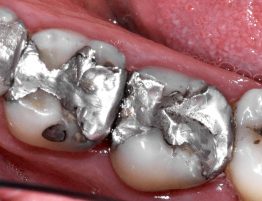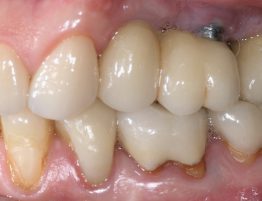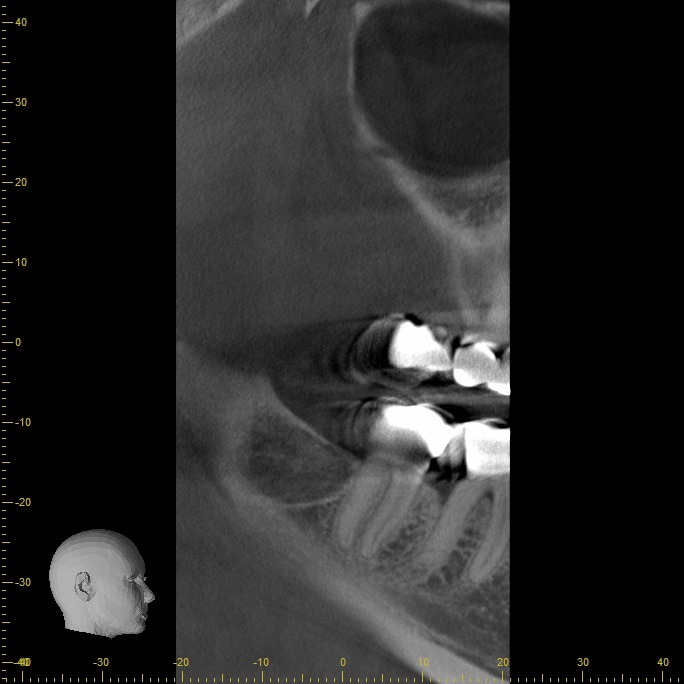
The term interference field stems from complementary medicine and means nothing other than structural change. These include scars and fractures, psychological traumas and in the area of the oral cavity chronic centres of inflammation starting from root-treated teeth and chronic inflammatory areas in the jaw bone, so-called NICO´s (Neuralgia Inducing Cavitational Osteonecrosis).
Biological dentistry regards root-treated teeth as chronic inflammatory centres that can lead to chronic problems both locally and elsewhere in the body. Weston Price, dentist and researcher, coined the term focal infection more than 100 years ago. Even then, he established a connection between the dead teeth and the chronic diseases of his patients. He recommended his patients to remove the suspicious teeth and implanted these teeth under the skin of rabbits. As a result, 80 percent of rabbits developed the same symptoms as the patient, and 100 percent in the case of heart disease.
 Chronic diseases are referred to as the epidemic of the 21st century. These include autoimmune diseases such as Hashimoto, type 1 diabetes, allergies, intestinal diseases such as Crohn’s disease or collitis ulcerosa, but also serious neurological diseases such as MS, Alzheimer’s, Parkinson’s and ALS, as well as psychological problems. The environment and especially chronic inflammations and toxins present in the body play an important role in their development.
Chronic diseases are referred to as the epidemic of the 21st century. These include autoimmune diseases such as Hashimoto, type 1 diabetes, allergies, intestinal diseases such as Crohn’s disease or collitis ulcerosa, but also serious neurological diseases such as MS, Alzheimer’s, Parkinson’s and ALS, as well as psychological problems. The environment and especially chronic inflammations and toxins present in the body play an important role in their development.
Without blood, nerve and lymph supply, the tooth is merely dead organic tissue without function, which due to its anatomy represents the perfect cavity for malignant (pathogenic) microorganisms. Per mm2 there are between 30 and 75000 small tubules in the tooth (dentin tubules). If the dentinal tubules of a root were to be lined up, the distance would be about one kilometre. Malignant (pathogenic) bacteria live in this widely branched canal system of a root and form highly toxic sulphur compounds (thioether, mercaptans) [1-14], which in turn can block vital processes. Since non-living organic tissue begins to decompose over time, additional corpse substances (putrescins and cadaverins) are formed, which are also highly toxic.
The innate immune system reacts to this infectious tooth with an increased production of inflammatory messengers (TNF-α, IL-1, INFγ). This subtle activation of the phagocytes leads to chronic inflammation of the surrounding tissue, often with cyst formation. The body encapsulates the toxic event from the rest of the organism, so to speak. In addition to the toxicity of sulphur-hydrogen compounds (thioether/mercaptans), it is not uncommon for a patient to be allergic to these substances. Also the root filling materials themselves are not unproblematic and usually contain classic allergens such as epoxy resin, Peru balsam or collophonium. Problems usually do not appear directly on the spot, but systemically elsewhere in the body. Therefore they are not always easy to diagnose.
Chronic inflammations in the jawbone are not uncommon. In most cases, these centres of inflammation result from old, not optimally healed tooth extraction wounds, dental attachments or foreign bodies. In this case, biological dentistry speaks of a fatty degenerative osteonecrosis of the jawbone (FDOK) or NICO – Neuralgia Inducing Cavitational Osteonecrosis. The term ischemic conch necrosis is also described in the literature. For the sake of simplicity, the pathological term NICO has been established. In addition to root canal treatment, NICO is another massive disturbance field for the entire body that often prevents complete recovery of the patient.
The result is a fat degenerative change in the bone. The metabolism changes, fungi, viruses and other microorganisms settle. Similar to the root-treated teeth, toxins and inflammatory messengers (TNF-α, IL-1, RANTES) are formed here, which can cause many symptoms elsewhere in the body [15, 18-26]. These toxins can be transported via the main nerve into the brain and from there into the whole body (retrograde axonal transport) [16-17] .
Patients with chronic fatigue (CFS), skin and intestinal problems as well as joint pain and immobility without a clear cause should always suspect tooth decay. In a study by Lechner and Baehr from 2014, NICO is already being discussed as a co-trigger for chronically inflamed breast tissue up to and including the development of breast cancer. Using three-dimensional, digital volume tomography (DVT), these can be diagnosed well on suspicion.
Gesunder Knochen Kranker Knochen
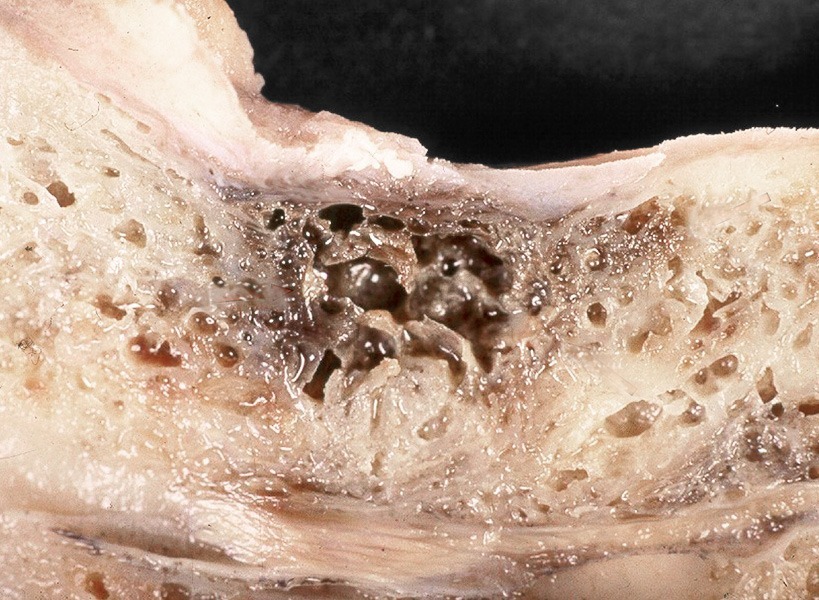
1. Diagnosis and Preparation
Diagnosis
Radiological:
Some inflammations and cysts at the tip of root-treated teeth can already be seen on a conventional panoramic X-ray. However, these can often only be clearly diagnosed with a three-dimensional X-ray image (DVT). In principle, a DVT should always be available for interference field diagnostics. Especially a NICO cannot be clearly diagnosed without DVT. In order to determine the exact dimensions in height, length and width and to be prepared for the operation, a DVT is absolutely necessary. The danger of damaging surrounding sensitive anatomical structures such as the main nerve in the lower jaw (alveolar nerve inferioris) and the maxillary sinuses in the upper jaw is significantly reduced.
Since the root-treated teeth should then be replaced directly by a ceramic implant, if anatomically possible, DVT is absolutely necessary for the reasons mentioned above.
Neuron therapy in biological dentistry:
Biological dentistry is used in so-called neuron therapy. The injection basically represents a kind of temporary restart for the respective region. The viscerocutaneous reflex stimulates the brain to focus on this part of the body, the potential interference field is decoupled from the corresponding organ for a certain time. In addition, procaine is enzymatically broken down into two components (PABA and Di-Ethyl Amino-Ethanol). This causes an increased blood circulation and vessel formation in the corresponding area.
You will be asked to observe all minimal changes in your condition for about 24 hours after the injection. Often a so-called second phenomenon (Huneke) occurs on the spot. This often leads to spontaneous improvement, especially in the case of shoulder-arm syndrome. The effect should last about eight hours to diagnose the guilty tooth or NICO area as a clear interference field. The anaesthesia itself is of short duration and usually subsides after about 30 minutes.
Ask your dentist about this form of diagnosis.
Laboratory diagnostics:
It is possible to examine a possible irritation of the immune system for messenger substances such as RANTES and the toxic degradation products thioether and mercaptans.
These additional tests are carried out by the medical department on request.
2. Supporting the body’s internal regeneration
NICO´s mainly develop after removal of wisdom teeth, but can occur in any toothless area. The reason for this is an incorrect diet with lots of sugar, wheat and cow’s milk products as well as a vitamin and nutrient deficiency: vitamin D3 (sun deficiency), zinc, magnesium and omega-3 fatty acids. The body is often overwhelmed with healing processes due to this deficiency situation – it is in “hibernation”, so to speak. It is not in a position to build up new tissue because the nutrients are simply missing.
NICO is therefore a symptom of an existing nutrient deficit.
Biological dentistry attaches great importance to the fact that this general nutrient deficiency is absolutely compensated before any surgical intervention.
Already 4 weeks before the planned surgical intervention and depending on your current vitamin D3 and LDL cholesterol value, start with our Bone Healing Protocol (BHP). Dr. Nischwitz), which we use for all surgical procedures in advance to support the body’s own regeneration (see point 4).
The intake of nutrients is of crucial importance for the subsequent regeneration of bone tissue.
3. Therapy – Interference Field Remediation
The therapy of NICO consists of the complete surgical removal of these inflammatory areas and subsequent disinfection with ozone.
Ozone only kills bacteria, viruses and fungi, but not the body’s own cells [28].
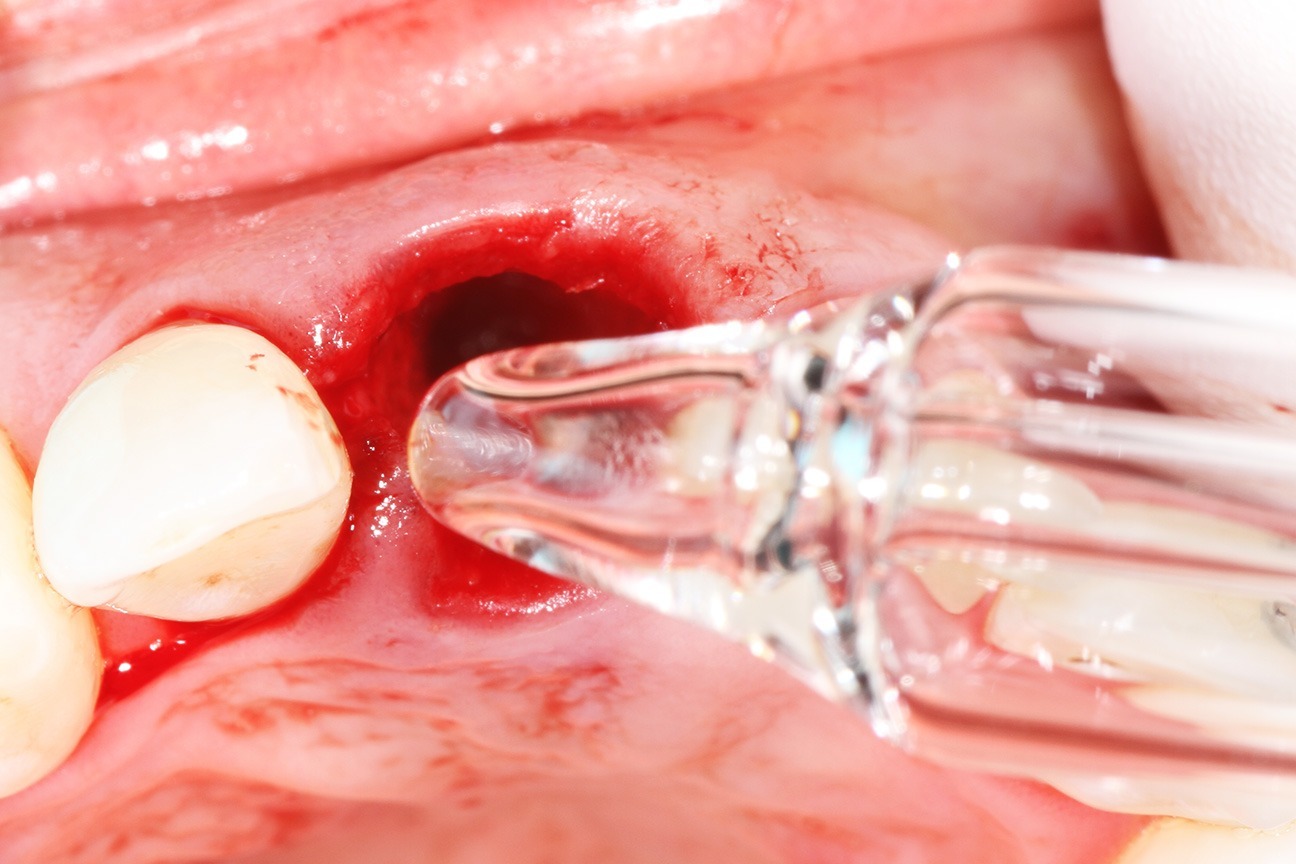
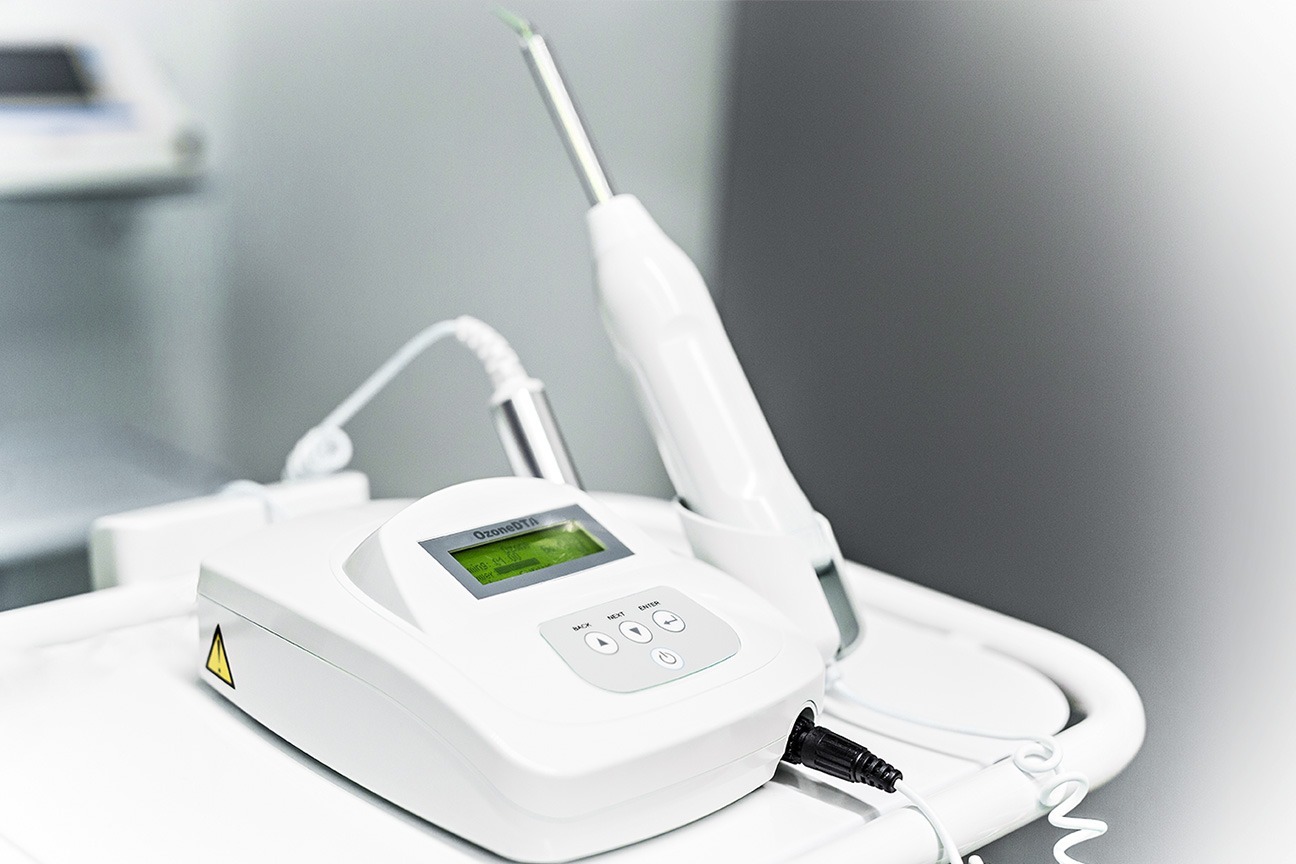
The operation is performed as minimally invasive as possible. In biological dentistry, we use piezosurgery, an ultrasound-based technique for maximum protection of tissue and endangered structures as well as hand instruments.
For optimal regeneration, the insertion of a Choukroun A-PRF™Membran obtained from the patient’s own blood has proven its worth. Blood is taken shortly before the operation. The freshly extracted venous blood is then centrifuged for approx. 8 minutes and then activated. After 15 minutes the membrane is available.
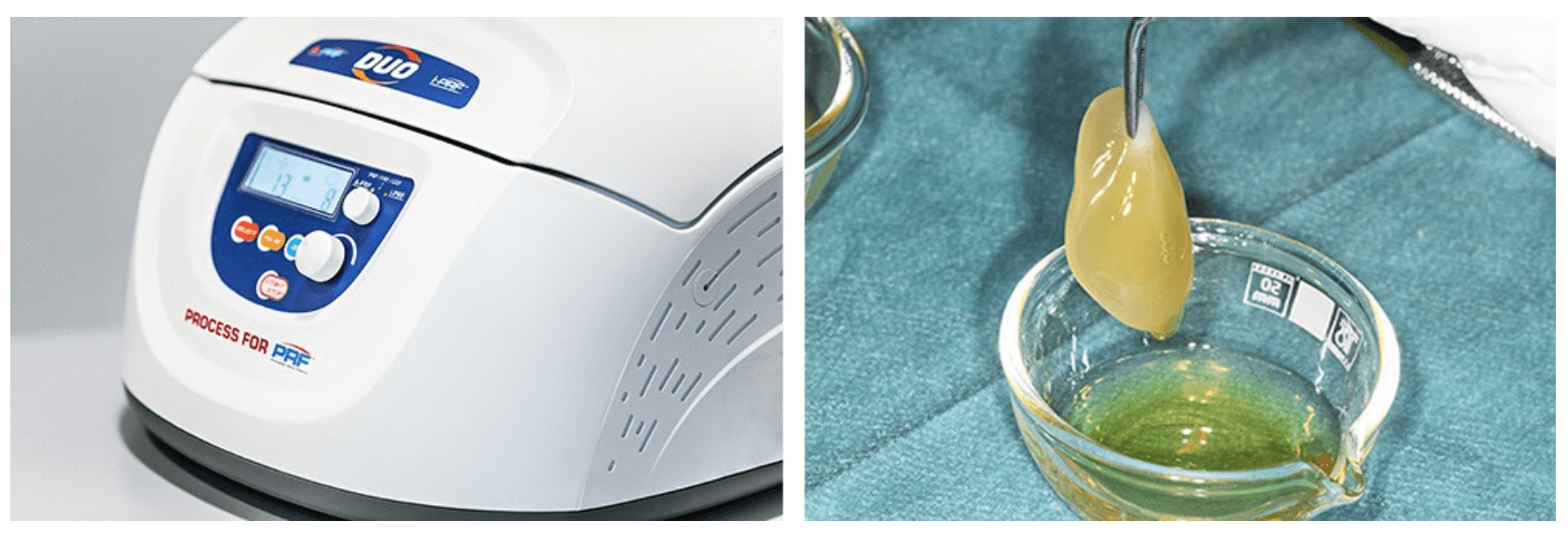
The Choukroun A-PRF™ Technology is 100 percent of the body’s own origin and therefore completely biocompatible.
In addition, the wound is flushed with a special interference field medication, which is also injected neuraltherapeutically into the surrounding tissue as a depot.
Procaine from Steigerwald (free of preservatives), Notakehl D5 (homeopathic antibiotics), Selenase 100 (antibacterial) and Arthrokehlan “A” (DAS Störfeldmedikament) are used. Following the operation, Traumeel is injected.
Biological Dentistry – Vitamin C Infusions
A highly dosed buffered vitamin C infusion is administered directly before the operation. This high dosage of vitamin C has an anti-inflammatory effect and thus protects against infection. Furthermore, the collagen synthesis positively supports wound healing. Vitamin C simultaneously acts as protection against metabolic disorders and detoxification and also produces energy which is needed for cell healing. The infusion is perfectly adapted to safety and effect by a multitude of other components.
An antibiotic can therefore be dispensed with in most cases.
The surgical procedure for removing foreign bodies is identical.
This protocol is also meticulously used for the removal of root-treated teeth that cannot be directly treated with a ceramic implant (see info sheet SCC). Thus nothing stands in the way of a perfect healing of the bone.
4. What should you as a patient consider?
In the days – better weeks – before the surgery, all damaging nutritional influences should be eliminated. This means: Avoid coffee, alcohol, tobacco, spit sugar, sweeteners, trans-fatty acids, gluten and cow’s milk products.
Water, healthy fats, protein, vegetables and salads in all their variations and a healthy lifestyle with plenty of sleep, exercise and sun have a positive stimulating effect.
Please follow the instructions in the Nutritional Design by Dr. Nischwitz.
Bone Healing Protocol Supreme by Dr. Nischwitz
Unless otherwise prescribed, the perioperative dietary supplement protocol should begin 28 days before the planned operation and end 28 days after the operation at the earliest. It is designed to support the body with the right nutrients for optimal regeneration of bone and soft tissues.
It is recommended to continue taking the nutrients in lower concentrations after the 14 days in order to keep the body basically healthy and efficient.
Your cooperation is crucial. Please take the dietary supplements and medications as prescribed and follow the nutritional recommendations given. For 14 days you should rest and listen to the signs of your body. The wound area should be spared as much as possible, so you should not suck on the wound area or play with your tongue. You must not touch or clean the blood clot or plasma membrane (A-PRF) for 3 days after the operation.
Swelling and bleeding post operation are fully normal and no cause for concern. Please cool the surgical area with a damp and cold cloth for two days and follow the instructions in the instruction sheet “Behaviour”. OP.
